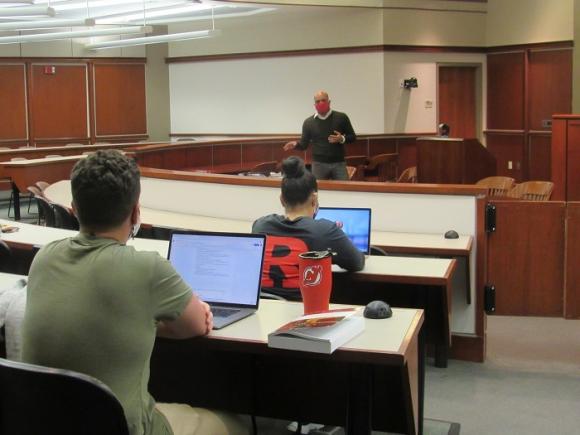Understanding the Art of Trial Presentations: Secret Strategies for Efficient Lawful Arguments
Understanding the Art of Trial Presentations: Secret Strategies for Efficient Lawful Arguments
Blog Article
Exactly How to Produce Engaging Trial Presentations That Win Over Juries and Juries
Crafting engaging trial discussions that mesmerize juries and courts is a nuanced art that calls for a tactical approach. By using ingenious visual devices, incorporating interactive components, and devoting time to rigorous method and rehearsal, lawful experts can significantly improve the impact of their court room presentations.
Recognizing Your Audience
To properly engage your audience throughout test presentations, it is crucial to recognize their preferences, assumptions, and degree of know-how in the topic. By tailoring your discussion to meet the particular needs of the target market, you can boost their understanding and retention of the info offered.
Begin by researching the demographics of the audience, such as age, education and learning level, and profession. This details can help you assess their knowledge with legal procedures and readjust your presentation style appropriately. A court might require simpler language and more aesthetic help contrasted to a team of legal professionals.
Additionally, take into consideration the emotional and psychological facets of your target market. Are they understanding towards particular debates or more inclined in the direction of truths and evidence? Understanding these subtleties can help you mount your discussion in a manner that resonates with the audience on a deeper level.
Storytelling Techniques
Comprehending your audience's expectations and preferences can considerably influence the efficiency of your test discussions, specifically when applying narration strategies to convince and mesmerize. Storytelling is a powerful tool that can aid legal representatives get in touch with discretionary on a much more emotional level, making complex lawful debates a lot more unforgettable and relatable.

Incorporating dazzling information, personal anecdotes, and ornate tools can additionally enhance the narration experience, maintaining the audience involved and spent in the result of the case. By crafting a persuasive tale that resonates with the worths and feelings of the jury and courts, attorneys can increase the opportunities of winning their disagreements and achieving desirable decisions.
Visual Discussion Tools
Making use of visual discussion tools can substantially improve the impact and performance of trial discussions by offering an aesthetically appealing means to communicate complex info to judges and juries. Aesthetic aids such as graphes, graphs, representations, and computer animations can assist streamline intricate details, making them more easily accessible and understandable to the audience. By integrating aesthetic elements into test discussions, attorneys can produce an engaging narrative that reverberates with jurors and leaves a long lasting impact.

Integrating Interactive Components
Incorporating interactive elements into test discussions can boost audience engagement and understanding, cultivating an extra interactive and immersive court experience. By integrating aspects such as interactive timelines, 3D computer animations, clickable displays, and digital reality reconstructions, lawyers can mesmerize jurors and courts, making intricate details extra memorable and obtainable.
Interactive timelines permit a dynamic screen of chronological events, helping the audience grasp the sequence of key occurrences in a case. visit this site 3D animations can bring crime scenes or accident repairs to life, supplying a thorough aesthetic depiction that helps in clearing up elaborate details. Clickable displays make it possible for individuals to engage with evidence, documents, or photos, permitting for a hands-on expedition of vital info.
Moreover, digital fact restorations can transfer the audience right into the heart of the action, providing an engaging point of view that conventional presentations might lack. These interactive elements not just engage the visitors however also encourage them to proactively participate in the test procedures, leading to an extra persuasive and impactful court presentation.
Technique and Wedding Rehearsal
To successfully take advantage of the potential of interactive components in trial presentations, thorough technique and wedding rehearsal are important pop over here to make sure seamless integration and shipment in the court setting. Technique and wedding rehearsal aid test presenters become acquainted with the content, timing, and circulation of their presentations, permitting them to with confidence navigate with different aspects such as videos, computer animations, or interactive graphics. By rehearsing their shipment, presenters can fine-tune their speaking skills, body movement, and general discussion style to boost persuasion and integrity before the jury and court.
During technique sessions, presenters can determine any kind of technical concerns that may develop with interactive elements, making sure that every little thing runs smoothly throughout the real trial. Furthermore, practicing in front of a mock target market or colleagues can supply beneficial feedback on the efficiency of the interactive parts and the overall presentation. This responses allows presenters to make needed changes Read More Here and improvements before entering the courtroom, eventually raising the influence and success of their trial presentations.
Final Thought
To conclude, creating appealing test discussions that astound judges and juries needs a deep understanding of the target market, reliable narration strategies, aesthetic devices, interactive elements, and extensive method (Trial Presentations). By applying these techniques, lawyers can efficiently convey their disagreements and evidence in a compelling manner that resonates with the decision-makers in the courtroom
Utilizing visual presentation tools can greatly improve the effect and efficiency of trial presentations by providing a visually interesting means to share intricate info to juries and courts. By including aesthetic aspects into trial discussions, legal representatives can develop an engaging narrative that resonates with jurors and leaves a lasting impact.
One preferred visual presentation device is the usage of multimedia presentations, which allow for the integration of video clips, photos, and audio recordings to supplement verbal arguments. Trial Presentations.To properly utilize the capacity of interactive elements in test discussions, extensive practice and practice session are crucial to make sure seamless assimilation and shipment in the courtroom setup. Method and rehearsal aid trial speakers end up being acquainted with the material, timing, and flow of their discussions, allowing them to with confidence navigate via different aspects such as videos, animations, or interactive graphics
Report this page